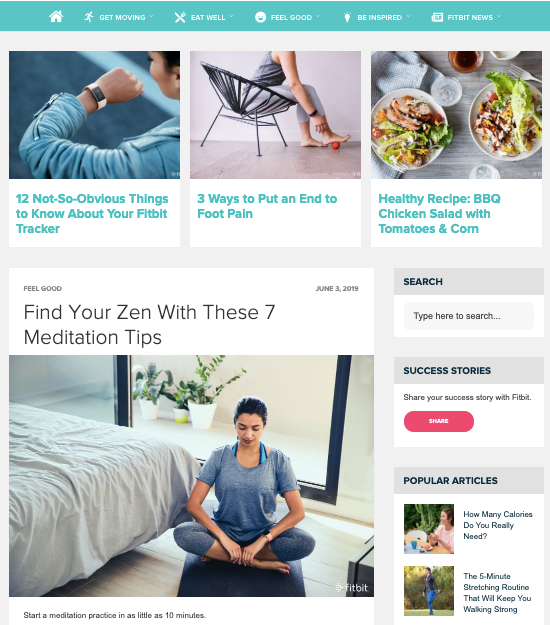Six essential online marketing strategies to grow your small business
Running a small business can be overwhelming. There are so many things you need to take care of to ensure your business runs smoothly. On top of that, you also need to excel at online marketing and figure out how to best promote your products and services online without breaking the bank.
From branding to email marketing and social media campaigns, it can be a challenge to determine where to invest your time, effort and money to get the highest return.
Trying everything is not a solution. Instead, you need to go with the essential marketing strategies that are most effective at increasing your visibility online and bringing lots of new customers your way.
In this post we’ll walk you through six of the key online marketing strategies that you should consider using for your small business.
1. Turn your business into a memorable brand
The great thing about the internet is that anyone can start a business online. The problem is that there are so many businesses that pop up every day, each one trying to get noticed, that consumers have stopped paying attention.
In other words, if your message is “here’s my product or service, come and buy it”, people’s default behaviour will be to ignore it and keep scrolling.
So how do you get people to not only notice your business but also to care, trust and buy from you?
By turning your small business into a memorable brand. How do you do that? By telling a compelling story that gives your audience a reason to pay attention, to care and to want to choose your business over your competitors.
Building a brand isn’t easy and it takes time. But it’s crucial if you want to stand out from the crowd, get people to fall in love with your brand and earn their business long-term.
The first step is to create a brand style guide where you lay out all the key elements that make up your brand, and how they all come together to tell your unique, remarkable story.
2. Write great content to educate and delight your audience
Every piece of content you publish online, whether it’s a blog post, a video tutorial, or an ebook, is a conversation with your target audience. It tells a story about your brand, what you stand for, and why people should care.
You see, content marketing isn’t about writing one piece of content after another where you talk about your latest product or service, how amazing it is and why everyone should buy it.
It’s about sharing relevant, engaging, informative content that helps you to build trust and a relationship with your audience. And then trusting them to make the decision to choose you over your competitors.
So, for example, if you’re selling swimming lessons for adults, your content should be a conversation with your target audience where you answer their most pressing questions and concerns about swimming such as:
- What techniques are most effective?
- How can you combat the fear of water?
- What are the most effective breathing techniques?
- What are the benefits of taking up swimming?
The idea is to stop talking about you and start talking about your customers, their needs, curiosities and concerns. It’s the only way people will pay attention to what you have to say, engage with your brand and hopefully, trust that they can’t possibly go wrong if they buy from you.
An example we often recommend is FitBit’s blog where they share lots of great resources on how to get moving and look and feel good.

Here’s another example from Trade, a site that sells coffee subscriptions. Their “How-To’s” section includes step-by-step tutorials and recipes that explain how to prepare coffee using different coffee makers and methods.

Another benefit of high-quality content is that it can boost your website’s ranking and visibility in the search engine results. So the next time a prospect looks up “swimming lessons in London”, you’ll have a higher chance of showing up at the top of the search engine results pages where prospects can see you in an instant.
For more examples and advice on how to get started with content marketing and blogging, check out these resources:
- Six ways your small business can do content marketing
- How to use blogging to boost your small business’s sales
- Making interesting content when you think you’re in a boring industry
3. Turn visitors into customers with email marketing
Imagine this scenario: a visitor lands on your site or blog. They’re not yet ready to buy what you’re selling but they like what they read. Then they close the tab and forget all about you, your products or services.
People have busy lives. They walk their dogs, go to work, to the gym, the theatre, the coffee shop. They check their Instagram/ Twitter/ Facebook/ LinkedIn accounts. They watch Netflix. Then they need to remember to pay their bills, call their parents, buy milk.
You think they’ll remember about your website? The chances are they won’t, which is why it’s your job to make it easy for them. How? A simple and cheap way to stay top of mind is with email marketing.
So, if you haven’t done this already, make sure to add a sign-up email form on your website and blog and entice visitors to subscribe to hear from you. It’s such a simple tactic that allows you to keep in touch with people who visit your site.
Here’s an example of how it looks:

Once you have your email list, you can reach out to your prospects, build a relationship with them and nurture them into becoming a customer.
Here are just a few things you can share with your subscribers via email:
- New content you’ve published that you think they’d find interesting or useful. This can be anything from blog posts to video tutorials or case studies.
- News that you’ve launched a new product or a new feature, and encourage them to check it out.
- An event you’re planning.
- A discount or an offer that they should take advantage of.
Read these posts to learn more about how to build your email list and how to make the most of it:
- Beginner’s guide to building your first email list
- How to build meaningful relationships with customers using email marketing
4. Invest only in the social media channels that work for you
You’ve probably set up a few social media accounts that you’re using to promote your business and engage with your target audience.
But are you active on the right channels where your audience hangs out, or are you just using what everyone else seems to be using? And are you really engaging with your audience or just having a one-way conversation where all you do is share links to your website and offering?
If you don’t know the answers to these questions, what you need is a social media strategy. This will help you to assess your current situation so you can determine which social media channels are working for your business and which ones are wasting your time and resources.
In this post you can learn more about the importance of having a social media strategy, how you can develop one that’s right for your small business, and how to measure results to ensure you’re on the right track.
You can also test some of these social media engagement strategies and see which ones work on your audience.
5. Attract more customers with paid advertising
Paid ad campaigns are always an effective way to get noticed and attract new customers quickly and in a cost-effective manner. You can run ad campaigns on Google as well as on social platforms like Twitter, Facebook and Instagram, depending on where your audience spends time online.
If you’re not familiar with Google Ads or pay-per-click advertising (PPC), this article explains the key things you should know about PPC and why it’s an effective and affordable way to get your business noticed in the search results and generate profit faster than any other online marketing tactic.
Now, while you can create and run an ad campaign yourself, keep in mind that it takes time and practice to get familiarised with the platform and get great results. And in the meantime, you might make some mistakes that will cost you money.
So you may want to consider hiring someone to help with your PPC.
6. Make user experience a priority
You can use all the strategies above and succeed in attracting more customers to your site, but it’ll all be for nothing if your website doesn’t work.
If your visitors land on your site and see a wall of text and can’t figure out what to do next, if they can’t find your contact information or if there’s nothing that says you are a legit or trustworthy business, you can bid those prospects goodbye.
To grow your small business, you need to do better. You need to provide any user who visits your site with a great user experience (UX). This means making sure that your site is easy and pleasant to use for anyone who visits, no matter if they came to your site to buy a product, ask a question or simply to browse around and learn more about what you do.
Go through this list of 28 website improvement tactics to see if there’s any change you need to make to your site to keep visitors around and buying from you.
Wrapping up
Running a small business is challenging and time-consuming. You not only need to focus on the day-to-day tasks but also on what else you can do to attract new customers and keep growing your business. While there’s lots of things you can try, make sure you don’t skip any of these six essential online marketing strategies.
